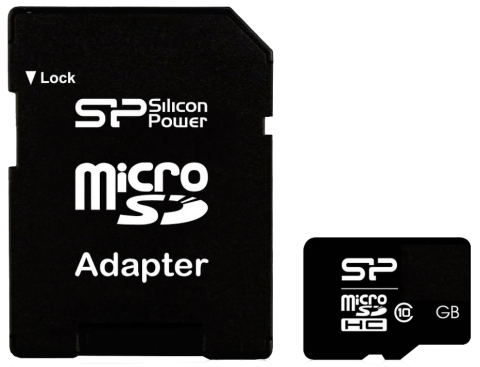
This image has format transparent PNG with resolution 480x367.
You can download this image in best resolution from this page and use it for design and web design.
Secure Digital, SD card PNG with transparent background you can download for free, just click on download button.
Secure Digital (SD) is a non-volatile memory card format developed by the SD Card Association (SDA) for use in portable devices.
The standard was introduced in August 1999 by joint efforts between SanDisk, Panasonic (Matsushita Electric) and Toshiba as an improvement over MultiMediaCards (MMC), and has become the industry standard. The three companies formed SD-3C, LLC, a company that licenses and enforces intellectual property rights associated with SD memory cards and SD host and ancillary products.
The companies also formed the SD Association (SDA), a non-profit organization, in January 2000 to promote and create SD Card standards. SDA today has about 1,000 member companies. The SDA uses several trademarked logos owned and licensed by SD-3C to enforce compliance with its specifications and assure users of compatibility.
Secure Digital includes five card families available in three different sizes. The five families are the original Standard-Capacity (SDSC), the High-Capacity (SDHC), the eXtended-Capacity (SDXC), the Ultra-Capacity (SDUC) and the SDIO, which combines input/output functions with data storage. The three form factors are the original size, the mini size, and the micro size. Electrically passive adapters allow a smaller card to fit and function in a device built for a larger card. The SD card's small footprint is an ideal storage medium for smaller, thinner and more portable electronic devices.
SD card speed is customarily rated by its sequential read or write speed. The sequential performance aspect is the most relevant for storing and retrieving large files (relative to block sizes internal to the flash memory), such as images and multimedia. Small data (such as file names, sizes and timestamps) falls under the much lower speed limit of random access, which can be the limiting factor in some use cases.
With early SD cards, a few card manufacturers specified the speed as a "times" rating, which compared the average speed of reading data to that of the original CD-ROM drive. This was superseded by the Speed Class Rating, which guarantees a minimum rate at which data can be written to the card.
The newer families of SD card improve card speed by increasing the bus rate (the frequency of the clock signal that strobes information into and out of the card). Whatever the bus rate, the card can signal to the host that it is "busy" until a read or a write operation is complete. Compliance with a higher speed rating is a guarantee that the card limits its use of the "busy" indication.
In this page you can download free PNG images: Secure Digital PNG, SD card PNG images free download